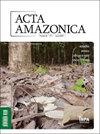Antileishmanial and cytotoxic activity of dillapiole n-butyl ether
IF 0.8
4区 环境科学与生态学
Q4 ECOLOGY
引用次数: 0
Abstract
ABSTRACT Among the neglected diseases, American cutaneous leishmaniasis (ACL) still remains highly endemic in some tropical regions. The currently available drugs for treatment are highly toxic, prompting the search for new therapeutic options. The aim of this study was to evaluate the toxic potential of dillapiole n-butyl ether (DBE) against Leishmania amazonensis and L. guyanensis, as well as its toxicity on human peripheral blood mononuclear cells (PBMCs) in vitro. For cell cytotoxicity, concentrations of DBE that ranged from 7.8 to 500 µM were used for 48 and 72 h. For the evaluation of the antileishmanial activity, DBE was tested at concentrations of 0.28 to 18 µM for 24, 48, and 72 h. A value of 36 µM was used for the amastigote assay. The selectivity index (SI) was determined by dividing the CC50/IC50 (macrophages/promastigotes). DBE exhibited a CC50 of 203.9 ± 0.5 µM in 72 h. DBE inhibited promastigote forms with an IC50 of 3.0 µM for both Leishmania species for 72 h. The standard, Pentacarinat®, showed an IC50 of 2.9 µM and 0.3 µM, respectively. The SI of DBE for both species was 67.9 for 72 h. DBE inhibited intracellular forms of L. amazonensis by 65.5% after 48 h. In molecular modeling, DLpOl-F showed two hydrogen bonds (SER418 and 421). DBE demonstrated promising in vitro antileishmanial potential.dillapole正丁基醚的抗利什曼原虫和细胞毒活性
在被忽视的疾病中,美国皮肤利什曼病(ACL)在一些热带地区仍然高度流行。目前可用的治疗药物是高毒性的,这促使人们寻找新的治疗方案。本研究旨在研究dillapole n-butyl ether (DBE)对亚马逊利什曼原虫和古yanl .利什曼原虫的体外毒性及其对人外周血单个核细胞(PBMCs)的体外毒性。对于细胞毒性,DBE的浓度范围为7.8至500µM,持续48和72小时。对于抗利什曼原虫活性的评估,DBE的浓度范围为0.28至18µM,持续24、48和72小时。对于无马鞭毛虫试验,DBE的浓度为36µM。通过将CC50/IC50(巨噬细胞/promastigotes)除以来测定选择性指数(SI)。DBE在72 h内的CC50值为203.9±0.5µM, DBE对两种利什曼原虫的抑制IC50值均为3.0µM,标准品Pentacarinat®的IC50值分别为2.9µM和0.3µM。DBE对两种植物72 h的SI均为67.9,48 h后DBE对亚马河L. amazonensis胞内形态的抑制作用为65.5%。在分子模型中,DLpOl-F显示两个氢键(SER418和421)。DBE显示出体外抗利什曼原虫的潜力。
本文章由计算机程序翻译,如有差异,请以英文原文为准。
求助全文
约1分钟内获得全文
求助全文
来源期刊

Acta Amazonica
PLANT SCIENCESECOLOGYZOO-ECOLOGY
CiteScore
1.70
自引率
0.00%
发文量
34
审稿时长
22 weeks
期刊介绍:
Acta Amzonica is a multidisciplinary, peer-reviewed, open access, free-of-charge scientific journal for research in and about the Amazon region, published since 1971 by the Instituto Nacional de Pesquisas da Amazônia - INPA, in Brazil.
The journal publishes quarterly issues containing articles and short communications in English across a broad range of disciplines, including Agronomy and Forestry, Animal Sciences and Fisheries, Biodiversity and Conservation, Biotechnology, Chemistry and Pharmacology, Environmental Sciences, Food Sciences, Geosciences, Health Sciences, Human and Social Sciences, and Materials Technology.
 求助内容:
求助内容: 应助结果提醒方式:
应助结果提醒方式:


